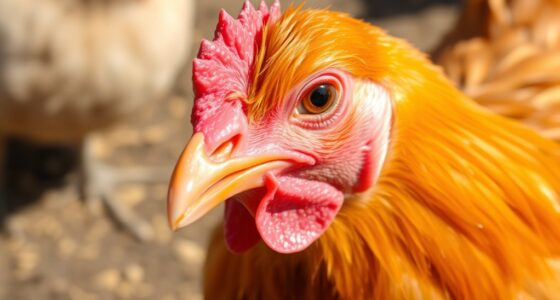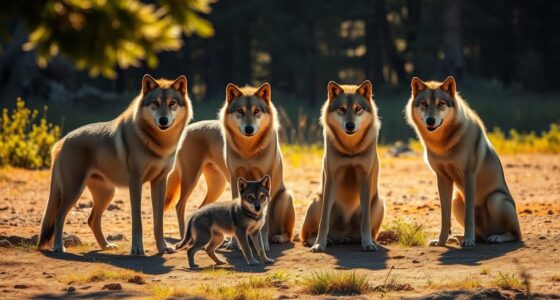Scent plays a crucial role in your animal behavior. It influences decisions about food, mates, and safety, helping you navigate complex environments. For animals like elk and zebra, scents signal the presence of predators, which can alter food choices. The dynamic nature of olfactory cues means that odors consistently shift based on resources and threats. By understanding how scent shapes behaviors, you can uncover fascinating insights into wildlife interactions and navigation. There's much more to explore on this topic!
Key Takeaways
- Scent acts as a vital map for animals, guiding their decisions regarding territory, food, and mating opportunities.
- Animals like elk and zebra adjust their food choices based on the presence of predators detected through scent.
- Olfactory cues provide real-time information about environmental threats and resource availability, shaping survival strategies.
- Manipulating scents can influence animal behavior, improving wildlife management and conservation efforts by deterring predators.
- The dynamic nature of olfactory cues reflects changing conditions, enhancing the complexity of animal navigation and decision-making.
The Olfactory Landscape Concept

The olfactory landscape serves as an indispensable map for animals, guiding their behaviors and decisions. In this dynamic environment, odors emitted by various animal species and environmental processes provide critical information.
You'll find that some odors are deliberate, like those marking territory, while others are incidental, such as metabolic byproducts. These overlapping odor contours reveal risks from predators and parasites and rewards like food or potential mates.
Each animal, including different family groups, utilizes its unique sensory architecture to track, ignore, or avoid specific scents, maneuvering effectively through their habitat.
Understanding Animal Decision-Making Through Scent
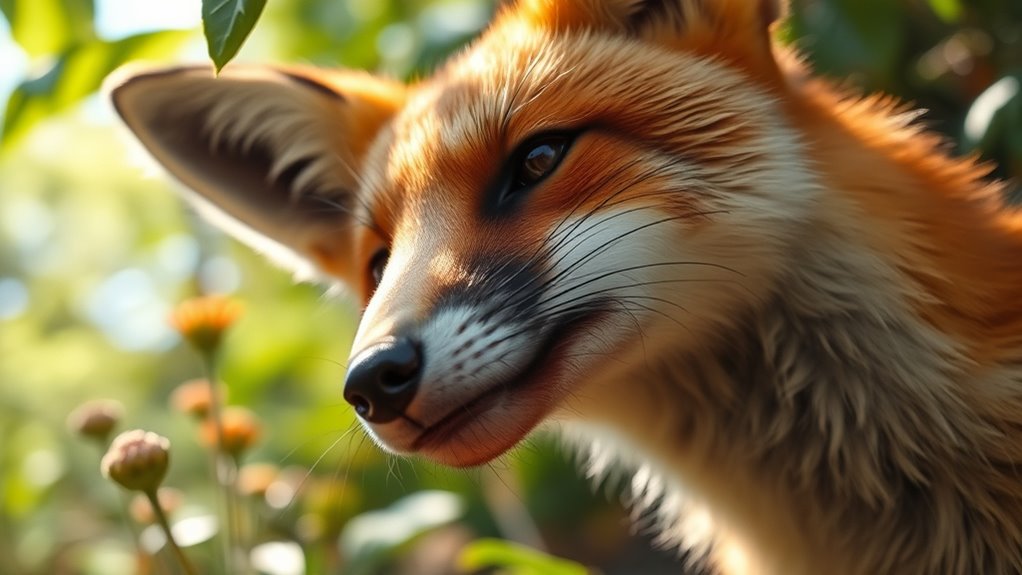
As animals navigate their environments, they rely heavily on scent to make crucial decisions about food sources, potential threats, and mates. For many living organisms, olfactory cues serve as essential information that shapes behavior and movement.
For instance, elk and zebra change their food choices based on predator presence, illustrating how scent directly influences survival strategies. By detecting overlapping odors, animals assess risks and rewards, helping them thrive in complex habitats.
Understanding how these creatures interpret scent can enhance wildlife management strategies, ensuring environments support their natural decision-making processes. Recognizing the importance of olfaction in animal behavior opens new avenues for research, highlighting how animals assess safety and resource availability through the scents they encounter.
The Dynamic Nature of Olfactory Cues
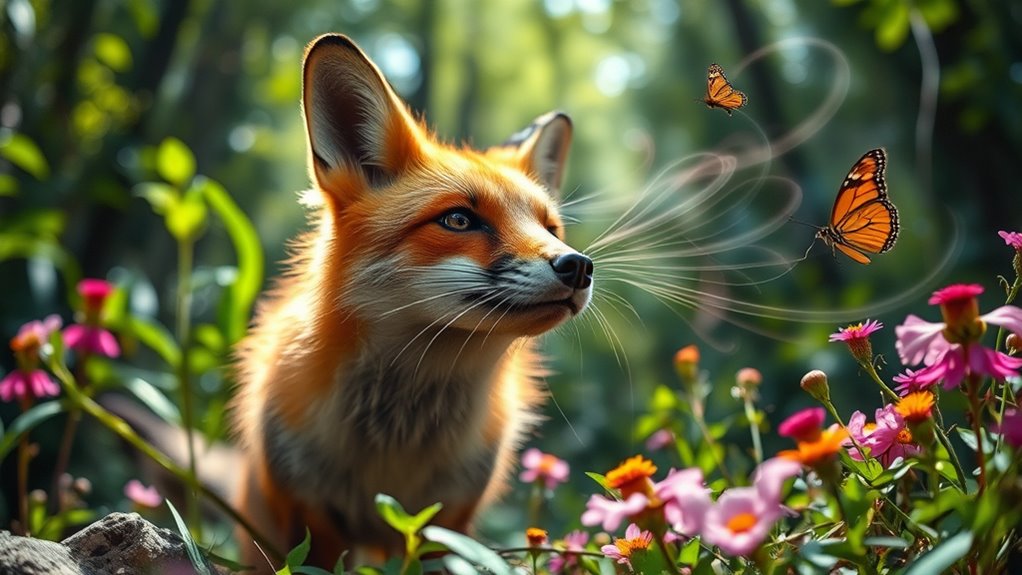
Olfactory cues constantly shift in response to a variety of factors, acting as dynamic indicators of an animal's environment.
You'll notice that the olfactory landscape reflects real-time distributions of resources and threats, influencing your navigation and decision-making. As you track overlapping odor contours, you gather critical information about predators, food sources, and potential mates.
Some odors are deliberate, like territorial markings, while others arise incidentally from metabolic byproducts, adding complexity to your olfactory environment. Your ability to assess surroundings based on these cues is shaped by your sensory architecture, which determines how you interact with the olfactory landscape.
Ultimately, dynamic olfactory contours help you weigh risks and rewards, guiding your movement and behavioral choices across various habitats.
Odor as a Source of Information in Movement Ecology
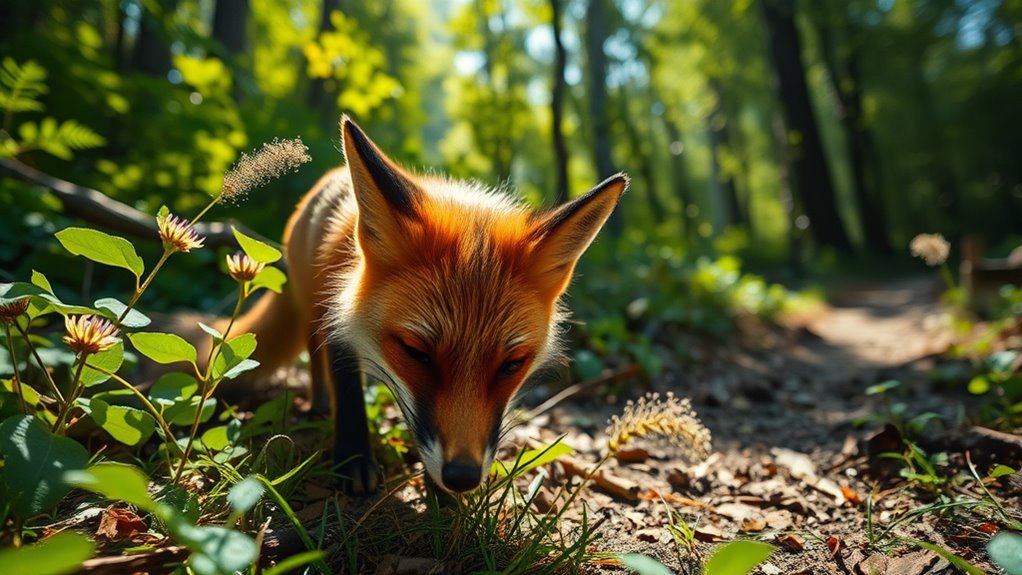
Movement ecology thrives on the information conveyed through odors, allowing you to navigate your environment with greater precision. Odors reveal vital details about predators, prey, and resources, guiding your movement decisions.
You can track or avoid specific scents, reflecting real-time challenges and opportunities in your surroundings. For instance, if you detect an infected individual or a contaminated area, you can steer clear of potential health risks.
Additionally, overlapping odor contours help you weigh the risks of predation against the rewards of food or mating. This intricate use of olfactory information leads to non-random movement choices, enhancing your ability to thrive in your habitat.
Overlapping odor contours guide your decisions, balancing predation risks with the rewards of food and mating.
Understanding these dynamics enriches knowledge about animal behavior and informs effective conservation strategies.
Implications of Olfactory Information on Wildlife Management
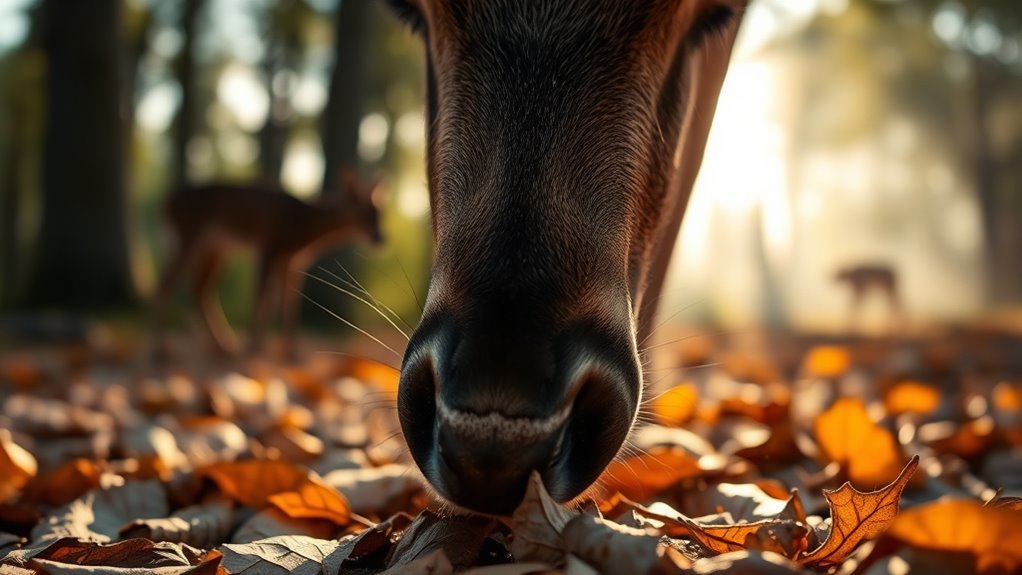
Understanding how animals use scent not only enriches our knowledge of their behavior but also has significant implications for wildlife management. By leveraging olfactory information, you can influence animal movement and behavior, leading to more targeted conservation efforts. For instance, using unpalatable scents can deter invasive predators, enhancing the survival of vulnerable species.
Here's a quick overview of olfactory strategies:
| Strategy | Benefit |
|---|---|
| Misinformation with scents | Deters invasive predators |
| Guiding wildlife with scents | Improves landscape connectivity |
| Enhancing reintroduction | Reduces predation risks |
| Manipulating risk perceptions | Informs resource availability |
Incorporating these olfactory tools can make your wildlife management practices more effective and sustainable.
Exploring Gaps in Current Research on Olfactory Influences
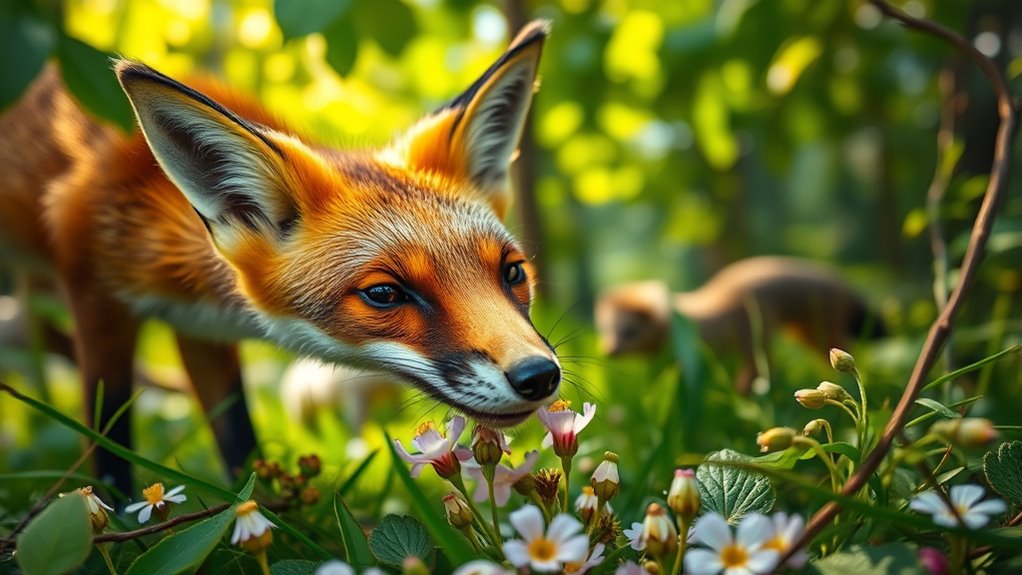
While current research often focuses on physical habitat and visual cues, the crucial role of scent in animal behavior remains largely overlooked. You mightn't realize that many non-random movement decisions animals make are heavily influenced by olfactory cues.
Understanding these sensory mechanisms is essential, especially since there's a significant gap in knowledge about how animals assess safety and food availability through smell. Dynamic olfactory contours, which indicate real-time distributions of resources and risks, are poorly mapped, presenting a promising area for future exploration.
To fill these gaps, we need technological advancements that can effectively detect airborne odors. Such innovations could deepen our understanding of the olfactory landscape and its ecological implications for animal movement and behavior.
Innovative Approaches to Utilizing Olfactory Tools
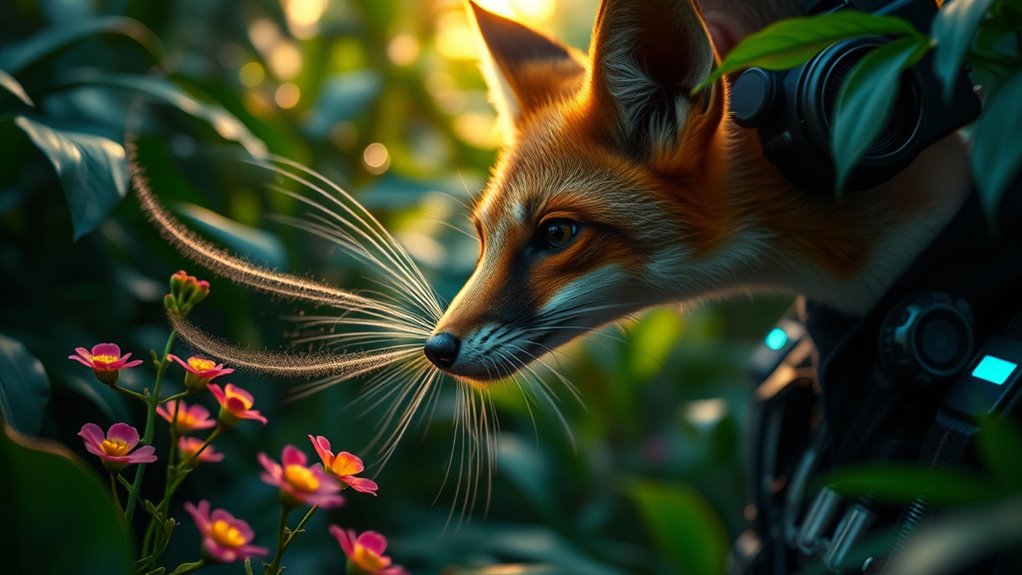
As researchers explore the complexities of animal behavior, innovative approaches to utilizing olfactory tools are proving to be game-changers.
These methods not only help manage wildlife but also enhance conservation efforts.
Innovative olfactory strategies not only aid in wildlife management but also significantly boost conservation initiatives.
- Olfactory repellents: Using unpalatable compounds can deter animals from specific areas, effectively altering their movement patterns.
- Olfactory misinformation: Confusing invasive predators reduces their targeting of threatened species, aiding in conservation.
- Guided passage: Utilizing scent to direct wildlife towards corridors encourages safe movement through fragmented habitats.
Future Directions for Olfactory Landscape Studies

Exploring the future directions for olfactory landscape studies offers exciting possibilities for unraveling the intricate relationships between animals and their environments. Researchers aim to map olfactory landscapes focused on the four Fs—food, mates, predators, and pathogens—over time and space. Technological advancements will enhance our ability to detect airborne odors, deepening our understanding of how these cues influence behavior.
Here's a summary of key areas for future research:
| Focus Area | Description |
|---|---|
| Mapping the Four Fs | Understanding spatial and temporal cues |
| Technological Tools | Improving odor detection methods |
| Safety Assessment | Investigating olfactory safety cues |
| Dynamic Contours | Studying resource distribution impacts |
| Manipulative Experiments | Exploring scent interactions |
These efforts will fill gaps in movement ecology and reveal the complexities of olfactory decision-making.
Frequently Asked Questions
How Does Scent Influence Behavior?
Scent influences your behavior in various ways. It guides your decisions, like when you choose food based on its smell or avoid certain areas due to unpleasant odors.
You might feel drawn to a specific person due to their fragrance, or you may instinctively move away from potential danger, like a predator's scent.
These olfactory cues provide essential information, helping you navigate your environment and respond appropriately to threats and opportunities.
What Is the Function of Smell in Animals?
Smell serves multiple functions in animals. It helps you locate food, avoid predators, and identify potential mates.
By detecting odors, you can assess your surroundings, weigh risks, and make informed decisions. For instance, if you catch a whiff of danger, you might choose to flee.
Additionally, smell enables you to find safe areas and recognize healthy companions, enhancing your chances of survival in a dynamic environment.
It's essential for traversing your world effectively.
What Is the Role of Pheromones in Animal Behaviour?
Pheromones are like the secret language of the animal kingdom, whispering tales of love, danger, and territory.
You've got to understand their role; they're vital for communication and social interaction. By releasing these chemical signals, animals can attract mates, warn others of threats, or even mark their turf.
It's fascinating how pheromones can influence foraging routes and reproduction decisions, making them essential for survival and thriving in their environments.
What Is the Role of Scents?
Scents play an essential role in your daily life, influencing your emotions and memories. They can evoke strong feelings, trigger nostalgia, or even affect your mood.
When you catch a whiff of fresh cookies baking, it might remind you of childhood. Scents also help you identify your surroundings, guiding your decisions—whether it's choosing a restaurant based on its aroma or avoiding a place with unpleasant smells.
Fundamentally, scents shape your experiences and interactions.
Conclusion
As you ponder the intricate world of scents, remember that the next time you step into nature, you're not just experiencing sights and sounds; you're walking through an olfactory tapestry woven by countless animals. Each whiff tells a story of survival, communication, and connection. What mysteries lie hidden in the air around you? The scent of a predator, the trace of a mate—what secrets might you reveal? The answers could change everything. So, take a deep breath.



